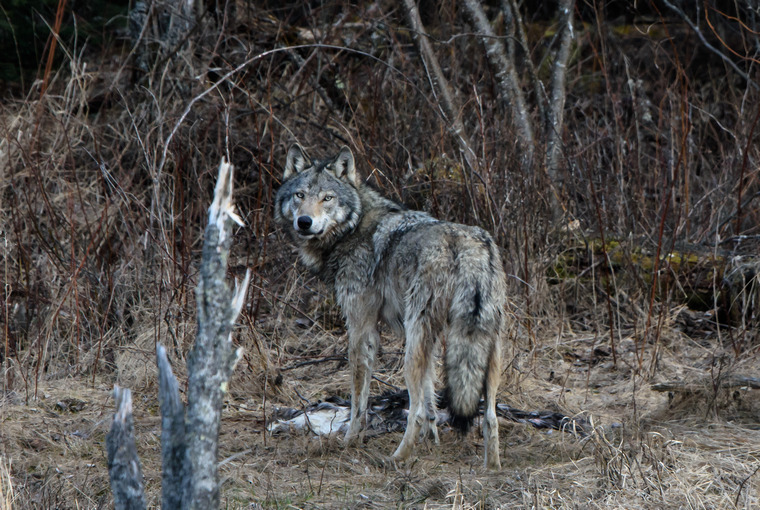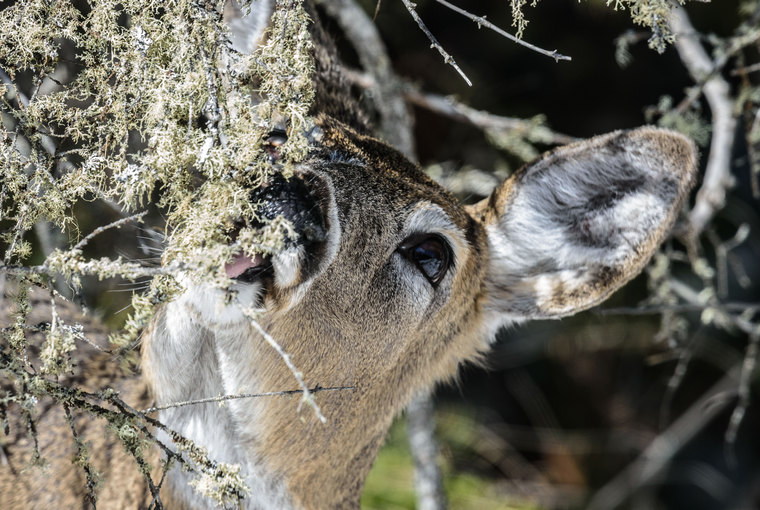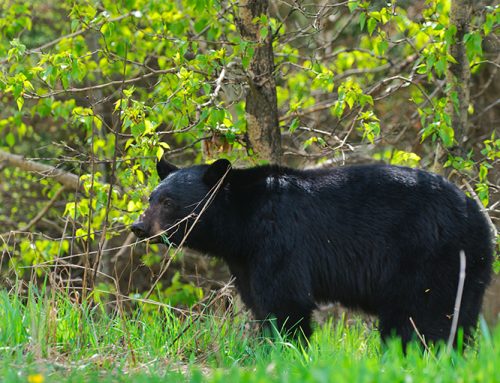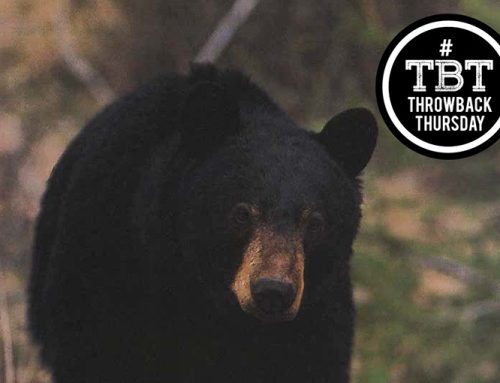
Moose on my stomping grounds close to my Kenora home have been on a steep decline for many years and on a similar downhill slide in much of northwestern Ontario, Manitoba, and Minnesota, as well as further afield, in places like Vermont and New Hampshire.
There were many theories. To sort it out, Dr. Murray Lankester, a parasitologist with Lakehead University, and I analyzed data pertaining to moose and deer in the Kenora area going back, in some cases, over 100 years (see bottom of page). We concluded that several factors were driving forces behind moose (and deer) population fluctuations.
For one, we found that both populations surged in the aftermath of large landscape-scale disturbances, namely fires, large blowdowns, clear-cut logging, and spruce budworm epidemics. Deer abundance was also tied to winter severity.
In the 1990s, deer and moose numbers swelled in tandem. Winters were mild and food was abundant. Even a bad winter in 1995 didn’t have much of an impact on deer — the woods were full of easy to reach and nutritious arboreal lichens growing on balsam trees killed by a spruce budworm outbreak. The same thing had happened 40 years earlier.
When deer became super-abundant, moose numbers began to plummet. Brain worm appeared to be a factor. The parasite has no discernible impact on deer, but is deadly on moose. When deer densities get above 4-5 deer per square kilometre, the disease becomes problematic to moose.
Deer densities rose to at least twice that level.
Moose numbers crashed
Exacerbating the problem was the weather — a series of wet summers made conditions ideal for terrestrial snails and slugs, the brainworm’s conduit.
High deer numbers also led to skyrocketing wolf numbers. The quantity and quality of moose browse declined precipitously with a slowdown in logging and the maturing of burns and blowdowns.
In short order, the moose population crashed.
Deer eventually depleted the supply of arboreal lichens. Winters turned cold and snowy. Wolves were everywhere. Deer, too, crashed. Today, there aren’t a lot of moose or deer in much of the Kenora area (except in the city where deer are relatively safe from wolves and people feed them).
Ups and downs normal
With deer numbers down, will the moose recover? Maybe, although with low levels of logging and no recent large forest fires or blowdowns, moose habitat is presently sub-optimal.
Deer have continued their downward spiral owing to a spate of snowy winters and predation by wolves. With few deer, wolves will eventually crash. Then, with at least a few mild winters — deer might stage a comeback. The next spruce budworm epidemic will help, but that’s still a few years off (budworm outbreaks occur about every 40 years).
The fact is, ups and downs are normal in many populations of wildlife. Stable populations, especially in seasonal climates, are the rarity.
What happened in the Kenora area isn’t exactly why moose or deer numbers have gone up or down elsewhere. Still, there are parallels.

Food availability is a common factor, as is weather, abundance of predators, hunting pressure and diseases (especially during population peaks).
Caribou population swings
Across North America, some populations of barren ground caribou have recently shown dramatic declines. Although alarming, it’s not unprecedented. Northern herds have a history of spectacular ups and downs. In Alaska, the caribou population dropped by more than 50% in the late-1970s. In Quebec/Labrador, the caribou population jumped from fewer than 200,000 in the late-‘70s to around 1 million in just 20 years. They have recently plummeted to only a few thousand.
In winter, caribou eat lichens, a very slow-growing plant, almost exclusively. Although over-grazing lichens isn’t the only issue they face (wolves, hunting pressure, disease and parasites and the weather are also important), food does matter.
Turkey numbers rose
After being reduced to paltry numbers (and extirpated in eastern Canada), wild turkeys, aided by re-stocking and re-introductions, underwent a huge expansion in range and population. But in the US, their numbers peaked a decade ago, and have since declined — again, not unexpectedly. “New” or reintroduced populations often flourish, subside, then have years of, you guessed it, ups and downs.
While these ups and downs can’t be curtailed, they can be managed.
“We really need to take a big picture approach to wildlife management,” said Ontario Federation of Anglers and Hunters Wildlife Biologist Dr. Keith Munro. “Rather than focusing on a single factor that may be affecting a wildlife population, we need to consider the whole system which includes, but is not limited to, harvest (both licenced and rights-based), predation, competition between species, diseases, parasites, and habitat.”
But no matter what we do, what goes up does come down.

Bruce Ranta is a retired wildlife biologist, outdoor writer, and photographer based in Kenora. Reach Bruce at [email protected]
Originally published in the July 2020 issue of Ontario OUT of DOORS.






This is a good read. The only thing that I would add is that the explosion of the deer population that we experienced in northwestern Ontario from the 1980’s to about 2010 was the result of the confluence of several positive factors namely good weather, good habitat, lots of quality food, and low mortality rates due to few predators. As Bruce alludes to, it’s not just one thing that will bring game population back to historic numbers. In fact, unless all the stars align, we may not experience a repeat of high density populations for some time. Historical population trends reveal that every population peak or decline is different. For example, not every peak is mercuric, and not every decline is deep.
Some factors such asweather are impossible to manage, but things like habitat and human caused mortality can be manipulated. Unfortunately habitat management takes a back seat to resource development and other land clearing activities. Concerned hunters should participate in endeavours such as wildlife, forest, and land use planning exercises to ensure that wildlife have sufficient quality places to live and prosper.
One of the contributing factors pertaining to the moose herd and probably deer as well is not mentioned. The fact that the Ministry of Natural Resources in its wisdom or more likely lack of foresight has been engaged in spraying cutovers to kill all deciduous growth which also is the mainstay of all ungulates diet. To think this would not create a problem is utter foolishness. If you wish to have coniferous forests that are the home of red squirrels and pine martens I guess spraying is an option, natural forests in the Kenora area have poplar and birch trees as well as other shrubs like willow and dogwood that deer and moose eat.